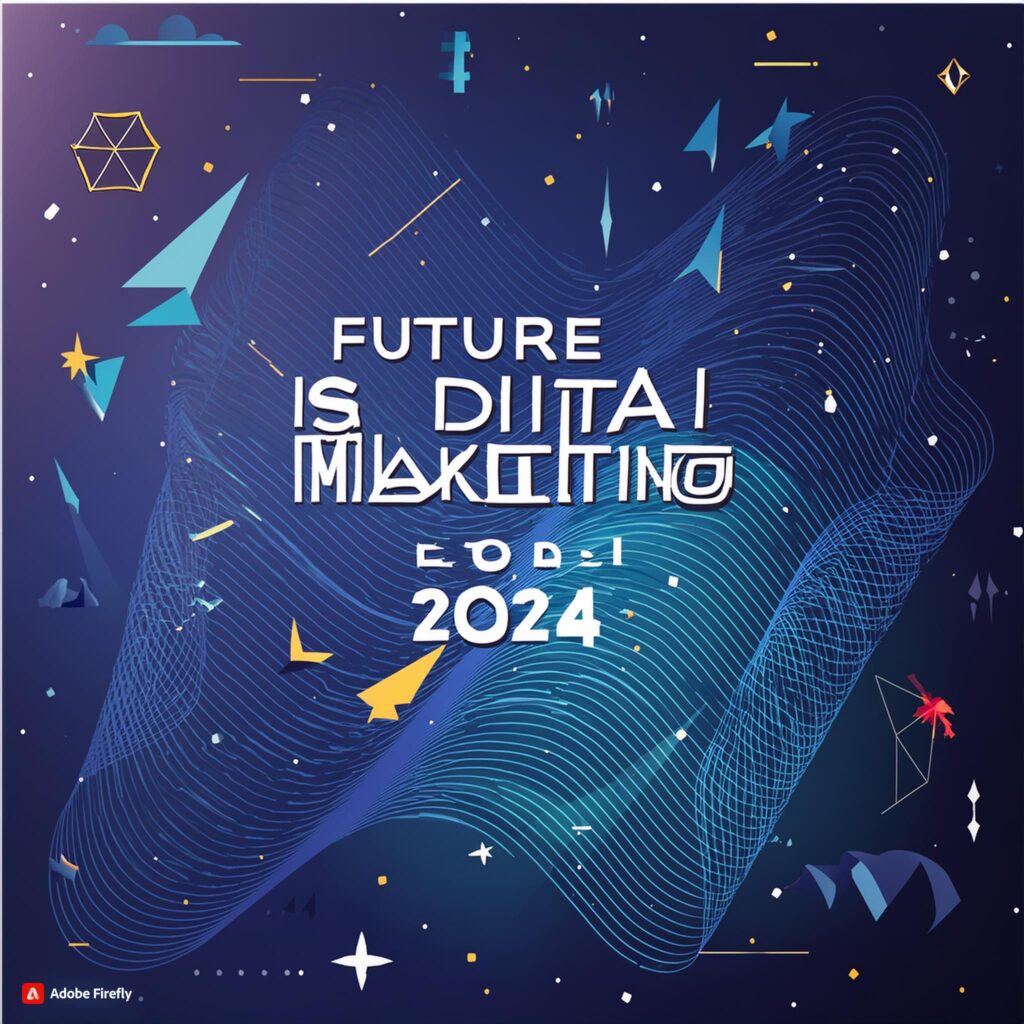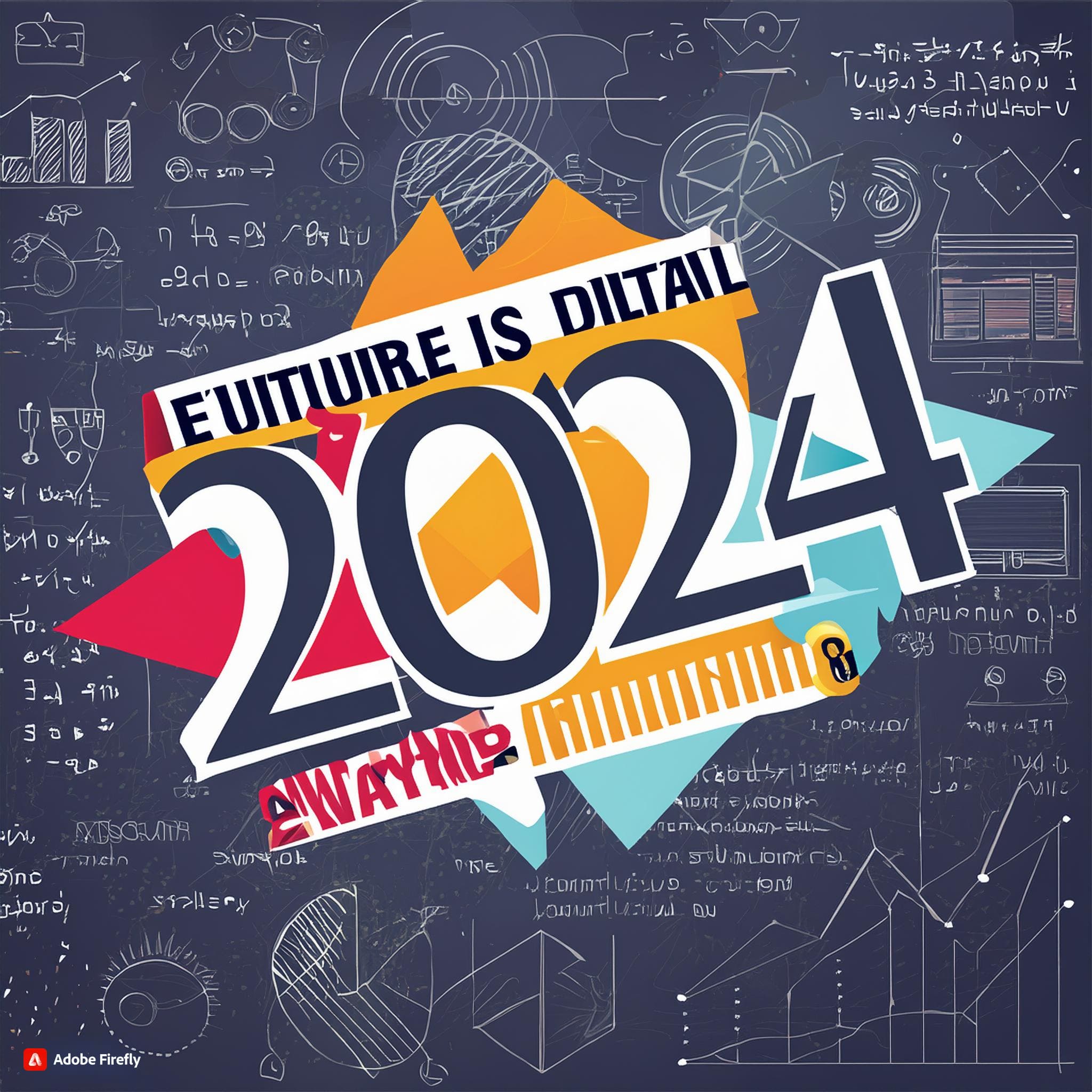Table of Contents
“Future is Digital Embrace the digital revolution and transform your marketing strategy for the future.”
Introduction
The Future is Digital: Embrace the Evolution of Marketing discusses the shift towards digital marketing strategies and the importance of adapting to this new landscape. This book explores the various tools and techniques available to marketers in the digital age, and provides insights on how to effectively reach and engage with consumers online. Whether you are a seasoned marketer looking to enhance your skills or a newcomer to the field, this book offers valuable information on how to thrive in the ever-changing world of digital marketing Future is Digital.
The Rise of Chatbots in Customer Service Future is Digital
In today’s fast-paced digital world, businesses are constantly looking for ways to improve their customer service and streamline their operations. One of the latest trends in customer service is the rise of chatbots. These AI-powered tools are revolutionizing the way businesses interact with their customers, providing instant support and personalized assistance around the clock.
Chatbots are becoming increasingly popular among businesses of all sizes, as they offer a cost-effective and efficient way to handle customer inquiries and provide support. By using natural language processing and machine learning algorithms, chatbots can understand and respond to customer queries in real-time, without the need for human intervention. This not only saves businesses time and money but also ensures a consistent and seamless customer experience Future is Digital .
One of the key benefits of chatbots is their ability to provide instant support to customers, regardless of the time of day. With chatbots, customers no longer have to wait on hold or send emails and wait for a response. Instead, they can simply type their query into a chat window and receive an immediate and accurate response. This level of convenience and efficiency is crucial in today’s fast-paced business environment, where customers expect instant gratification and personalized service.
Another advantage of chatbots is their ability to handle multiple customer inquiries simultaneously. Unlike human agents, who can only handle one conversation at a time, chatbots can engage with hundreds of customers simultaneously, providing instant support to everyone who needs it. This not only improves customer satisfaction but also allows businesses to scale their customer service operations without increasing their overhead costs Future is Digital.
Furthermore, chatbots can be programmed to provide personalized recommendations and offers to customers based on their past interactions and preferences. By analyzing customer data and behavior, chatbots can tailor their responses to each individual customer, providing a more personalized and engaging experience. This level of personalization not only enhances the customer experience but also increases customer loyalty and retention Future is Digital.
As the use of chatbots continues to grow, businesses are finding new and innovative ways to leverage this technology to improve their customer service and drive sales. For example, some businesses are using chatbots to automate the sales process, guiding customers through the purchasing journey and providing product recommendations based on their preferences. Others are using chatbots to conduct customer surveys and gather feedback, allowing them to better understand their customers’ needs and preferences Future is Digital.
In conclusion, the rise of chatbots in customer service is revolutionizing the way businesses interact with their customers, providing instant support, personalized assistance, and seamless experiences. By embracing this technology and integrating it into their customer service operations, businesses can improve efficiency, increase customer satisfaction, and drive sales. As the future of marketing continues to evolve, businesses that embrace chatbots and other digital tools will be better positioned to succeed in the digital age Future is Digital.
Influencer Marketing in the Digital Age Future is Digital

In today’s digital age, marketing strategies have evolved significantly, with influencer marketing becoming a prominent force in the industry. Influencer marketing involves collaborating with individuals who have a large following on social media platforms to promote products or services. This form of marketing has proven to be highly effective in reaching target audiences and driving engagement Future is Digital.
One of the key reasons why influencer marketing has become so popular is the shift in consumer behavior. With the rise of social media, people are spending more time online, and influencers have become trusted sources of information and recommendations. By partnering with influencers, brands can tap into their loyal fan base and leverage their influence to promote their products or services Future is Digital.
Another reason why influencer marketing is so effective is the authenticity and credibility that influencers bring to the table. Unlike traditional forms of advertising, where consumers are bombarded with ads, influencer marketing feels more organic and genuine. When an influencer promotes a product, their followers are more likely to trust their recommendation, leading to higher conversion rates and increased brand loyalty Future is Digital .
Influencer marketing also allows brands to reach niche audiences that may be difficult to target through traditional advertising channels. Influencers have followers who share similar interests and demographics, making it easier for brands to tailor their messaging and reach the right audience. This targeted approach can lead to higher engagement and better ROI for brands Future is Digital .
As the digital landscape continues to evolve, influencer marketing is expected to play an even bigger role in shaping the future of marketing. With the rise of new social media platforms and technologies, brands have more opportunities than ever to collaborate with influencers and create engaging content that resonates with their target audience Future is Digital.
However, with the increasing popularity of influencer marketing, it’s important for brands to be mindful of the changing landscape and adapt their strategies accordingly. As more brands jump on the influencer marketing bandwagon, competition for influencers’ attention and engagement is fiercer than ever. Brands need to be creative and innovative in their approach to stand out from the crowd and make a lasting impression on consumers Future is Digital.
In conclusion, influencer marketing is a powerful tool that can help brands connect with their target audience in a meaningful way. By partnering with influencers, brands can leverage their influence and credibility to promote their products or services and drive engagement. As the digital landscape continues to evolve, influencer marketing will play a crucial role in shaping the future of marketing. Brands that embrace this evolution and adapt their strategies accordingly will be well-positioned to succeed in the digital age Future is Digital.
Data-driven Marketing Strategies Future is Digital
In today’s fast-paced digital world, marketing strategies are constantly evolving to keep up with the ever-changing landscape. One of the most significant shifts in recent years has been the move towards data-driven marketing strategies. By harnessing the power of data and analytics, businesses can better understand their customers, target their marketing efforts more effectively, and ultimately drive better results Future is Digital.
Data-driven marketing is all about using data to inform decision-making and drive marketing campaigns. This approach allows businesses to better understand their target audience, track the effectiveness of their marketing efforts, and make adjustments in real-time to optimize performance. By analyzing customer data, businesses can gain valuable insights into consumer behavior, preferences, and trends, allowing them to tailor their marketing messages to better resonate with their audience Future is Digital.
One of the key benefits of data-driven marketing is the ability to track and measure the success of marketing campaigns with precision. By analyzing key performance indicators (KPIs) such as conversion rates, click-through rates, and return on investment (ROI), businesses can determine which marketing tactics are working and which are not. This data-driven approach allows businesses to make informed decisions about where to allocate their marketing budget for maximum impact Future is Digital.
Another advantage of data-driven marketing is the ability to personalize marketing messages for individual customers. By leveraging customer data such as purchase history, browsing behavior, and demographic information, businesses can create targeted marketing campaigns that speak directly to the needs and interests of their audience. Personalized marketing messages are more likely to resonate with customers and drive engagement, leading to higher conversion rates and increased customer loyalty Future is Digital.
In addition to personalization, data-driven marketing also allows businesses to segment their audience more effectively. By dividing customers into distinct groups based on shared characteristics or behaviors, businesses can tailor their marketing messages to each segment for maximum impact. This targeted approach ensures that marketing messages are relevant and timely, increasing the likelihood of conversion and driving better results overall Future is Digital.
As technology continues to advance, the amount of data available to businesses is only going to increase. This presents both opportunities and challenges for marketers. On one hand, businesses have access to more data than ever before, allowing them to gain deeper insights into customer behavior and preferences. On the other hand, the sheer volume of data can be overwhelming, making it difficult to extract meaningful insights and take action Future is Digital .
To navigate this data-rich landscape, businesses need to invest in the right tools and technologies to collect, analyze, and interpret data effectively. Data analytics platforms, customer relationship management (CRM) systems, and marketing automation tools can help businesses make sense of their data and use it to drive marketing strategies. By leveraging these technologies, businesses can gain a competitive edge in today’s digital marketplace and stay ahead of the curve Future is Digital.
In conclusion, data-driven marketing is the future of marketing. By harnessing the power of data and analytics, businesses can better understand their customers, target their marketing efforts more effectively, and drive better results. As technology continues to advance, the importance of data-driven marketing will only continue to grow. Businesses that embrace this evolution and invest in the right tools and technologies will be well-positioned to succeed in the digital age Future is Digital.
Personalization and Customer Experience
In today’s digital age, marketing has evolved significantly from traditional methods to more personalized and customer-centric approaches. With the rise of technology and data analytics, businesses now have the ability to tailor their marketing strategies to meet the individual needs and preferences of their customers. This shift towards personalization and customer experience has become essential for companies looking to stay competitive in a crowded marketplace Future is Digital.
One of the key benefits of personalization in marketing is the ability to create more meaningful and relevant interactions with customers. By leveraging data and analytics, businesses can gain valuable insights into customer behavior, preferences, and purchasing patterns. This information allows companies to deliver targeted messages and offers that resonate with their audience, ultimately leading to higher engagement and conversion rates Future is Digital.
Moreover, personalization can help businesses build stronger relationships with their customers by showing that they understand and care about their needs. By delivering personalized content and recommendations, companies can create a more personalized and memorable experience for their customers, leading to increased loyalty and repeat business Future is Digital.
In addition to personalization, customer experience has also become a critical factor in the success of marketing efforts. In today’s competitive landscape, customers have more choices than ever before, making it essential for businesses to differentiate themselves through exceptional customer service and experiences Future is Digital.
A positive customer experience can lead to increased customer satisfaction, loyalty, and advocacy, ultimately driving business growth and success. By focusing on delivering a seamless and personalized experience across all touchpoints, businesses can create a strong emotional connection with their customers, leading to long-term relationships and brand loyalty Future is Digital.
Furthermore, customer experience is not just limited to the purchasing process but extends to all interactions that customers have with a brand, including customer service, social media engagement, and post-purchase support. By providing a consistent and positive experience at every touchpoint, businesses can build trust and credibility with their customers, ultimately leading to increased customer satisfaction and loyalty Future is Digital.
As technology continues to advance, the future of marketing will be increasingly driven by personalization and customer experience. Businesses that embrace this evolution and prioritize the needs and preferences of their customers will be better positioned to succeed in a rapidly changing marketplace Future is Digital.
In conclusion, the future of marketing is digital, and businesses must adapt to stay ahead of the curve. By focusing on personalization and customer experience, companies can create more meaningful and engaging interactions with their customers, leading to increased loyalty, satisfaction, and ultimately, business success. Embracing the evolution of marketing is not just a trend but a necessity in today’s competitive landscape Future is Digital.
Voice Search Optimization
In today’s digital age, technology is constantly evolving, and businesses must adapt to stay ahead of the curve. One of the latest trends in digital marketing is voice search optimization. With the rise of virtual assistants like Siri, Alexa, and Google Assistant, more and more people are using voice search to find information online. As a result, businesses need to optimize their websites and content to ensure they are easily found through voice search Future is Digital.
Voice search optimization involves making changes to your website and content to make it more accessible to voice search technology. This includes using natural language keywords, creating conversational content, and optimizing for local search. By implementing these strategies, businesses can improve their visibility in voice search results and reach a wider audience Future is Digital.
One of the key benefits of voice search optimization is that it can help businesses stay ahead of the competition. As more and more people use voice search to find information online, businesses that have optimized their websites and content for voice search will have a competitive advantage. By embracing this new technology, businesses can position themselves as industry leaders and attract more customers Future is Digital.
Another benefit of voice search optimization is that it can improve the user experience. Voice search technology is designed to provide quick and accurate answers to users’ queries, making it easier for people to find the information they are looking for. By optimizing your website and content for voice search, you can provide a seamless and user-friendly experience for your audience Future is Digital.
In addition to improving visibility and user experience, voice search optimization can also help businesses increase their website traffic and conversions. By optimizing your website for voice search, you can attract more organic traffic and generate more leads and sales. This can ultimately lead to increased revenue and growth for your business Future is Digital.
To optimize your website for voice search, there are several strategies you can implement. First, focus on using natural language keywords that people are likely to use when speaking into a virtual assistant. This will help your website rank higher in voice search results. Second, create conversational content that is easy to understand and provides valuable information to users. Finally, optimize your website for local search by including your business address, phone number, and other relevant information Future is Digital.
Overall, voice search optimization is a crucial aspect of digital marketing that businesses cannot afford to ignore. By embracing this new technology and optimizing your website and content for voice search, you can improve your visibility, user experience, and ultimately drive more traffic and conversions. As technology continues to evolve, it is important for businesses to stay ahead of the curve and adapt to new trends in order to remain competitive in the digital landscape. Embrace the evolution of marketing and take advantage of voice search optimization to propel your business forward in the digital age.
Virtual Reality and Augmented Reality in Advertising

In today’s fast-paced digital world, marketing strategies are constantly evolving to keep up with the latest trends and technologies. One of the most exciting developments in the world of advertising is the use of virtual reality (VR) and augmented reality (AR) to create immersive and engaging experiences for consumers. These cutting-edge technologies are revolutionizing the way brands connect with their target audience, offering new opportunities for creativity and innovation.
Virtual reality allows users to enter a completely digital environment, while augmented reality overlays digital elements onto the real world. Both technologies have the potential to transform the way consumers interact with brands, offering a more personalized and interactive experience. By incorporating VR and AR into their marketing campaigns, companies can create memorable and engaging content that resonates with their audience on a deeper level.
One of the key benefits of using VR and AR in advertising is the ability to create immersive experiences that capture the attention of consumers. By transporting users to a virtual world or overlaying digital elements onto their surroundings, brands can create a sense of wonder and excitement that traditional advertising methods simply cannot match. This level of engagement can help to build brand loyalty and drive customer retention, as consumers are more likely to remember and connect with brands that offer unique and memorable experiences.
Another advantage of using VR and AR in advertising is the ability to provide consumers with a more personalized and interactive experience. By allowing users to interact with digital elements in real-time, brands can tailor their messaging to individual preferences and interests, creating a more personalized and engaging experience for each consumer. This level of customization can help to build stronger relationships with customers and drive higher levels of engagement and conversion.
In addition to creating immersive and personalized experiences, VR and AR can also help brands to stand out in a crowded marketplace. By embracing these cutting-edge technologies, companies can differentiate themselves from competitors and position themselves as innovative and forward-thinking. This can help to attract new customers and drive brand awareness, as consumers are more likely to take notice of brands that are at the forefront of technological advancements.
While the use of VR and AR in advertising offers many benefits, it is important for brands to approach these technologies with a strategic mindset. In order to be successful, companies must carefully consider their target audience and objectives, and develop campaigns that are tailored to meet these specific goals. By taking the time to understand their audience and create content that resonates with their interests and preferences, brands can maximize the impact of their VR and AR campaigns and drive meaningful results.
As the digital landscape continues to evolve, the use of virtual reality and augmented reality in advertising is poised to become increasingly important. By embracing these cutting-edge technologies, brands can create immersive, personalized, and engaging experiences that resonate with consumers and drive meaningful results. By staying ahead of the curve and incorporating VR and AR into their marketing strategies, companies can position themselves as leaders in their industry and connect with their target audience in new and exciting ways. The future of marketing is digital – are you ready to embrace the evolution?
Artificial Intelligence in Marketing

In today’s fast-paced digital world, the landscape of marketing is constantly evolving. One of the most significant advancements in recent years is the integration of artificial intelligence (AI) into marketing strategies. AI has revolutionized the way businesses connect with their target audience, analyze data, and optimize campaigns for maximum impact.
One of the key benefits of using AI in marketing is its ability to analyze vast amounts of data in real-time. This allows businesses to gain valuable insights into consumer behavior, preferences, and trends, which can then be used to tailor marketing campaigns for maximum effectiveness. By leveraging AI-powered tools such as predictive analytics and machine learning algorithms, businesses can create personalized and targeted marketing campaigns that resonate with their audience on a deeper level.
Another advantage of using AI in marketing is its ability to automate repetitive tasks and streamline processes. This not only saves time and resources but also allows marketers to focus on more strategic initiatives that drive business growth. AI-powered chatbots, for example, can provide instant customer support and personalized recommendations, enhancing the overall customer experience and increasing customer satisfaction.
Furthermore, AI can help businesses optimize their marketing campaigns by analyzing performance metrics and making real-time adjustments. By continuously monitoring and analyzing data, AI can identify trends and patterns that human marketers may overlook, allowing businesses to make data-driven decisions that drive results. This level of precision and efficiency is crucial in today’s competitive market, where every marketing dollar counts.
In addition to improving campaign performance, AI can also help businesses better understand their target audience. By analyzing social media interactions, website behavior, and other online activities, AI can create detailed customer profiles that provide valuable insights into consumer preferences and behaviors. This information can then be used to create more targeted and personalized marketing campaigns that resonate with customers on a deeper level.
Despite the numerous benefits of using AI in marketing, some businesses may be hesitant to embrace this technology due to concerns about cost, complexity, or privacy. However, the reality is that AI is becoming increasingly accessible and affordable for businesses of all sizes. Many AI-powered tools and platforms are now available on the market, making it easier than ever for businesses to integrate AI into their marketing strategies.
Moreover, the potential return on investment for businesses that embrace AI in marketing is significant. By leveraging AI to optimize campaigns, personalize messaging, and improve customer engagement, businesses can drive higher conversion rates, increase customer loyalty, and ultimately boost revenue. In today’s digital age, where consumers expect personalized and relevant experiences, AI is no longer a luxury but a necessity for businesses looking to stay ahead of the competition.
In conclusion, the future of marketing is digital, and AI is at the forefront of this evolution. By embracing AI-powered tools and platforms, businesses can gain a competitive edge, drive better results, and create more meaningful connections with their target audience. As technology continues to advance, businesses that leverage AI in their marketing strategies will be better positioned to succeed in the ever-changing digital landscape.
Q&A
1. What is the future of marketing?
The future of marketing is digital.
2. Why is it important to embrace the evolution of marketing?
It is important to embrace the evolution of marketing to stay competitive and reach consumers where they are spending their time.
3. How can businesses adapt to the digital marketing landscape?
Businesses can adapt to the digital marketing landscape by investing in digital channels, data analytics, and technology.
4. What are some key trends in digital marketing?
Key trends in digital marketing include personalization, artificial intelligence, video content, and influencer marketing.
5. How can businesses leverage social media for marketing purposes?
Businesses can leverage social media for marketing purposes by creating engaging content, interacting with followers, and utilizing paid advertising options.
6. What role does data play in digital marketing?
Data plays a crucial role in digital marketing by providing insights into consumer behavior, preferences, and trends.
7. How can businesses measure the success of their digital marketing efforts?
Businesses can measure the success of their digital marketing efforts through key performance indicators (KPIs) such as website traffic, conversion rates, and return on investment (ROI).
Conclusion
In conclusion, it is clear that the future of marketing lies in embracing the digital evolution. Businesses that adapt to the changing landscape and leverage digital tools and platforms will be better positioned to reach and engage with their target audience in a more effective and efficient manner. Embracing digital marketing strategies is essential for staying competitive and relevant in today’s fast-paced and technology-driven world.
